110th Anniversary of Denon vol.2 Interview with Ryo Okazeri, the Record Player Engineer
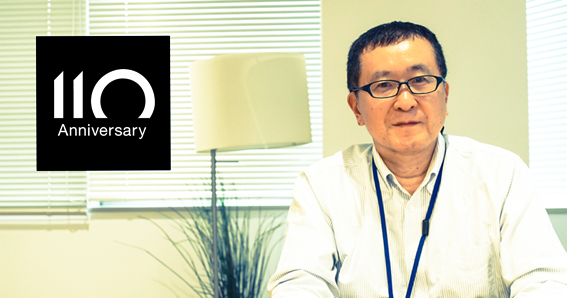
Denon is celebrating its 110th anniversary in 2020. Seizing the opportunity to celebrate this milestone, we are publishing a series of articles on Denon's history, its sound philosophy, craftmanship mindset, notable products, and interviews with key people on our official blog. In this second article, we talked to Ryo Okazeri, who shares a lot of history on the brand, and who has been involved in the development of cartridges and record players.
DENON’S HISTORY OF GRAMOPHONES, CARTRIDGES AND RECORD PLAYERS.
How long have you been working for Denon?
Okazeri: I have worked for Denon for a long time. I joined Nippon Columbia upon graduation, and I am probably the oldest person in the company.
What kind of work did you do at the beginning of your career?
Okazeri: At first, I was assigned to the Design Division at Mitaka Office in Tokyo. Denon was the audio equipment division of Nippon Columbia in Japan, and when I joined the company it was called Den-On, not Denon. The Mitaka Office became the headquarters of a broadcasting equipment manufacturer called Nippon Denki Onkyō Kabushikigaisha (Japan Electric Sound Company) after merging with Columbia Corporation. Therefore the name Den-On became the root of the Denon brand.
What were you in charge of at the Mitaka office?
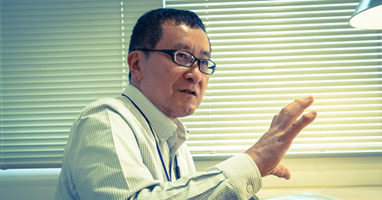
Okazeri: I was assigned to the cartridge development division. In terms of timing, it was a transition period from analog to digital, when packaged media was about to change from records to CDs. Later I moved to the Division of Development and Engineering of Digital Devices, and looking back now, I believe I was lucky to have a chance to experience the engineering of digital devices beginning with transducer technology.
Did you engineer cartridges for a while after you joined the company?
Okazeri: After I joined the company, I worked on cartridge engineering for about five years. Since cartridges were not stand-alone products, I was trained as an engineer to acquire knowledge on peripheral equipment like tonearms and record player turntables.
Denon is celebrating its 110th anniversary in 2020, can you talk about Denon's 110th anniversary from a record player-centric perspective?
Okazeri: Speaking of Denon’s founding, it is important to mention the company was initially founded by Nippon Chikuonki Shokai (Japan Recorders Corporation). This is the origin of Nippon Columbia and thereby it is the 110th anniversary of the brand from its very beginning. If you consider Denon's predecessor was a phonograph company, I think it is fair to say Denon was a brand that existed together with machines that turned disks since its foundation.
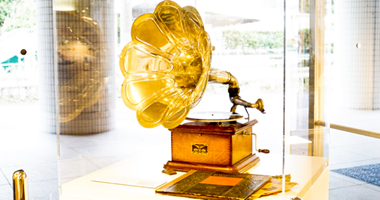
Gramophone No. 35 at the entrance (made in Kawasaki Factory in 1915 by Japan Recorders Corporation)
I heard the recording of the Emperor Showa's imperial rescript at the end of the war was also made by Denon.
Okazeri: Yes, that is true. It was the DP-17K portable disk recorder made by Japan Electric Sound Company that recorded and played back the sound board. At the end of the war in 1945, there were no tape recorders or anything like that, so we used acetate discs and played them back immediately after recording. Recording was done by engraving a groove with a cutter on an acetate board.
Since its foundation in 1939, Japan Electric Sound Company supplied NHK with a variety of broadcasting equipment. Before the establishment of Japan Electric Sound Company, there were no domestic recording equipment in Japan. It is known that at that time, a German radio and television apparatus company Telefunken provided Japan with its disc recorders. However, it was very expensive despite the excellent performance of its equipment. With a desire to make domestic products, Japan Electric Sound Company was asked to develop and manufacture a domestic disk recorder. That technology was also used in recording and replaying the recorded discs of the Imperial acceptance of the Potsdam Declaration, which is related to the historical moment that determined the fate of Japan.
Is it true that Japan Electric Sound Company, Denon's predecessor, was a manufacturer of commercial broadcasting equipment?
Okazeri: Yes, it is. At first, we supplied NHK with broadcasting equipment because there was no commercial broadcasting except for NHK at that time. Even after the war, we had a close relationship with NHK, and we continued supplying them with broadcasting equipment, mainly focusing on disc recorders. After 1951, when other commercial broadcasting companies started appearing, our production increased even more.
The DL-103 cartridge, which would later become a catalyst for the development of consumer audio equipment, was made to meet the strict specifications required by NHK (Japan Broadcasting Corporation) in 1964, when they started FM stereo broadcasting, to make it compatible with their broadcasting equipment.
The DL-103 may look like a consumer product, but it was originally intended for professional use. After entering the consumer market with the DL-103, the Denon brand tried to expand its business with record players.
“CREATE TECHNICALLY SUPERIOR PRODUCTS & EARN A REPUTATION AS A RELIABLE MANUFACTURER.”
So Denon's first product for consumer use was the DL-103 cartridge, which was developed for FM stereo broadcasting at first.
Okazeri: That's right. Japan Electric Sound Company was a hardcore professional equipment manufacturer, but the broadcast equipment market was limited in size because the people who would buy it were only broadcasting companies. Although Japan Electric Sound Company was attracted to the consumer market, it could not enter it with its mass production technology and sales.
The real opportunity for Japan Electric Sound Company to enter the consumer market happened when the company became a subsidiary of Nippon Columbia in 1947, and then turned into the audio equipment division of Nippon Columbia in 1963 through an absorption merger.
At that time, the DL-103 was used in FM stereo broadcasts. Since then most Japanese broadcasters have probably used the DL-103 to play records, and although CDs and other digital content are now the sources of broadcasts, I believe they are still using the DL-103 to play analog records.
When we launched Denon products into the consumer market we first sold the DL-103 cartridge, which became the standard equipment for broadcasting. Presenting the DL-103 cartridge directly to the consumer market was a big step into the beginning of consumer audio equipment. It took place in 1970.
Is the “consumer” DL-103 the same as the DL-103 used by broadcasters?
Okazeri: Yes, it is the exact same thing. In fact the DL-103, which has the exact same structure as it used to, is still being manufactured at Shirakawa factory (D&M Shirakawa Audio Works) in Fukushima. In total we have been making this product for 56 years.
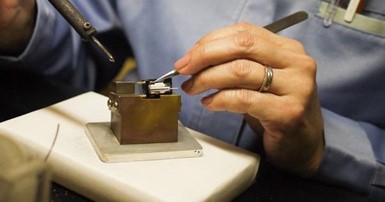
DL-103 is still made by hand at Shirakawa Factory
After the release of the DL-103, Denon released consumer record players, didn’t it?
Okazeri: Yes, it did. Denon started supplying NHK with record players like the DN-302F in response to FM stereo broadcasts. After that, we used that same technology to develop consumer-use record players too.
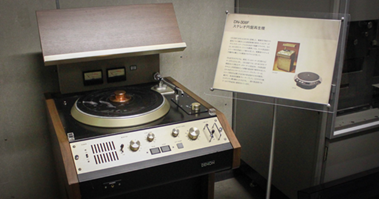
DN-308F, a record player produced for professional use by broadcasters
At the time, the head of operations at the Mitaka Division described himself as a weak manufacturer in the consumer market and set three norms:
- “Create Products that are Technically Superior to Other Companies”
- “Manufacture Highly Reliable Products”
- “Earn a Reputation as a Reliable Manufacturer with Excellent Products"
In the late 1960s, when Denon began manufacturing consumer products, the audio equipment market was gradually shifting to mass sales by the major electronics manufacturers due to technological developments since the late 1950s. It was recognized that the major manufacturers were taking over most of the market. These three norms from the Mitaka Division were shared among all Denon employees to drive to market.
To achieve this, our experience of developing and manufacturing professional audio equipment for professional use was used to the fullest extent as a technological accumulation before launching into the consumer market. You can feel our determination to create products in the consumer electronics market with features that are distinct from ordinary mass-produced, mass-market products.
I think there is a "Philosophy of Denon on product manufacturing" that is still conveyed in this sentence.
Okazeri: I think you are right. Denon's products still have a consistent commitment to technologically outperform the competition in all categories. And back then, the first record player developed for consumer use based on that goal was the DP-5000 turntable, Denon’ first record player for commercial market.
DP-5000 & DP-3000, SYNONYMOUS WITH DENON RECORD PLAYERS.
Is it right to say Denon's first consumer-oriented record player, the DP-5000, was just a turntable then?
Okazeri: Back then, most enthusiasts were interested in choosing and combining a turntable, tonearm, cartridge, and cabinet, so the DP-5000 was just a turntable – an independent product.
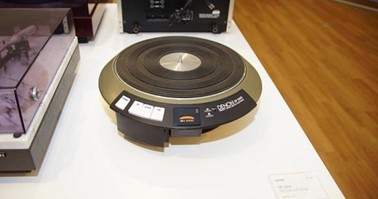
Denon DP-5000 (Denon Museum)
Was the DP-5000 a successful product?
Okazeri: It was a hit for many reasons. The design was quite innovative, and I think audiophiles were surprised by that. If you look at the data from that time, you will see that despite some cautious arguments, there was a ton of trial and error.
What I like about Denon's turntables is that the industrial design still reflects professional equipment, such as the design 33 and 45 buttons. The buttons are big and easy to press, aren't they? When you press these buttons, the unit starts playing right away. This is operability unique to broadcasters.
After that, the DP-3000 was released, right?
Okazeri: Yes, just like the DP-5000, the DP-3000 is simply a turntable, and the DP-3700 comes with a cabinet. The basic structure is almost identical to the DP-5000. However, because the DP-5000 was a downsized version of the broadcast model, it was “too much” to be a consumer-oriented product and needed to be improved in terms of cost. Therefore, the DP-3000 was designed to solve the cost issue. I think it was one of the most popular Denon turntable models in the market at that time.
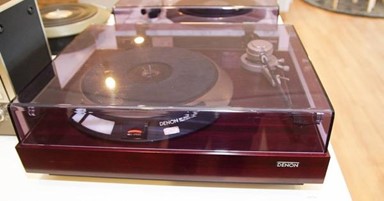
DP-3000 (Turntable in cabinet) (Denon Museum)
Are the DP-5000 and DP-3000 representative of Denon’s record players?
Okazeri: I believe they are. I think these two models played a crucial role in giving Denon an advantage in the component market when it had just entered the consumer market. The most important feature of the DP-5000 and DP-3000 is that they use AC motors to drive the turntable.
THE REASON DENON CHOSE TO USE AN AC DIRECT-DRIVE MOTOR – THE FIRST IN THE WORLD.
What are the advantages of Denon's unique "AC Motor Direct-Drive"?
Okazeri: Denon could see the advantages of using an AC motor and direct drive. In fact, the broadcasters used the record player in a tricky way. To play a song on a program, they would drop the stylus into the record's groove and manually stop it. When you released your hand, the record would start to spin and produce sound. That is how we used to play music. In the past, this was usually done mechanically with an idler drive.
Do you mean that you can play songs as soon as a cue comes out during the program?
Okazeri: Yes.
It is called a switch to cue the music, right? Do you get the right rotation as soon as you release your fingers?
Okazeri: Yes, you absolutely do. However, unlike instant starts that uses the digital memory, it cannot be done in zero seconds. The combination of motor starting torque and platter inertia determines the start-up time. We had been making it better and better, and eventually we could develop a direct-drive system that starts spinning at the correct RPM as soon as you press the switch.
Do you mean you were required to have direct-drive to switch to cue the music on the air?
Okazeri: Yes because there is no mechanical loss in the direct drive system. As soon as you press the 33 or 45 switch the song starts to rotate correctly.
Incidentally, the first broadcast-use DN302F equipped with a direct-drive AC motor had a 0.2-second start-up time and a 30-degree rotation angle, and it rotated normally.
It would be a long story to talk about direct-drive, but I think NHK came up with the required specifications for this motor, and we developed it to meet those specifications as well.
We realized that broadcasting equipment was going to be automated in the future, and we knew that it would not be usable unless it was electrically controlled, so it was essential to go from a stop state to a direct-drive that could be started up electrically without mechanical action.
Was there already such a thing as a direct-drive record player with an AC motor?
Okazeri: No, there was no such thing as a direct-drive record player with an AC motor. The motors used in direct-drives at the time were DC motors, which generate a magnetic field by running a direct current through a coil and then inserting a magnetic rotor into the coil to repel the S/N poles, which in turn makes the rotor turn.
AC is alternating current. A lot of AC motors do not have magnets. There are several layers of coils, and when an AC voltage is applied there, the magnetic field vectors generated by the current are combined and the motor begins to rotate. It is called a rotating magnetic field, and the rotor rotates along that rotating magnetic field. Since the rotor does not depend on the magnet's poles, there is no cogging or torque ripple that occurs with DC motors, and it can rotate smoothly.
I think the reason we made a turntable with a direct-drive AC motor, which was not available for record players at the time, was because we were practicing what I mentioned earlier - making products that were technologically superior to other companies.
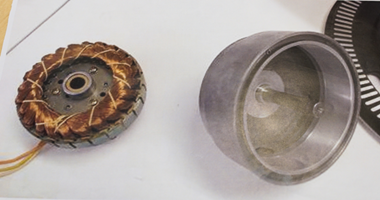
Denon released brand new DP-400 and DP-450USB record players in 2018 for the first time in a long time, and you are the engineer of these models, Mr. Okazeri. I am sure there is a revival of the record player behind it, but what are your thoughts on it?
Okazeri: Record players are analog, so the dynamic range of the sound on a record player is definitely narrower than those of a CD, and there is also a lot of distortion and relatively poor performance in regard to S/N and separation. But when you listen to a record player, you can feel the presence of a performer. You can feel the space where the performers are. The sense of reality or space, the atmosphere in which the music is flowing is a little different. That feels real. Personally, I think that is something you can easily sense when playing analog music.
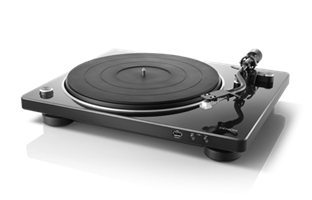
I LEARNED FROM THE ENGINEERS OF DL-103.
Are there any products that are particularly memorable to you?
Okazeri: When I was a student, I built a system with components. I was listening to jazz and classical music, and I thought I was one of the audiophiles too. (laughs)
I was fine if I could listen to music, and I was not too fussy about the sound, but I had a friend who was really into audio at that time. He would often buy new components, and I had a chance to get his used ones he sold me at a discount.
As I recall, I started out using V15 Type 3, MM cartridge of Shure. Later I bought a beetle-shaped MC cartridge (SPU-G) of Ortofon working part-time, and I was amazed by the change of sound quality. When I researched MC cartridges, I found out that there was DL-103 from Denon in Japan. I remember working part-time again and buying one along with an AU320 boost transformer. When I joined Nippon Columbia, every part of those cartridges was in front of me as a part of my job.
So, you were assigned to the development section of a product that amazed you.
Okazeri: That's right. When I joined the company, the people who were involved in the engineering of the DL-103 and its peripheral equipment were still working. That is why I was able to learn about cartridges and their peripheral technologies by simply watching them.
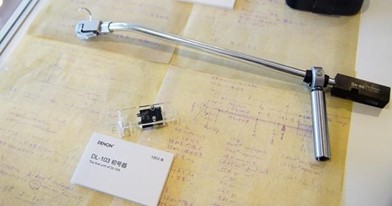
The DL-103's first model laid out on the drawing of the DL-103 and the dedicated tonearm blueprint- (Denon Museum)
Moreover, all the engineers at that time were amazing. Even though the DL-103 was such a small device, it was all handmade during the development stage. In the beginning, there was nothing to work with. We were capable of developing it logically and actually giving it form. That is what technology is all about. So, I am proud to talk about the old Denon and its products, though I think it is very presumptuous of me to say that.
When you were a rookie, there were a lot of great engineers like that around you, weren't there?
Okazeri: Yes, there were a lot of amazing engineers. For example, when I joined the company, we were developing a high-end cartridge called the DL-1000A, which cost 100,000 Japanese yen that time. Since I was a new employee, I was told to "measure it," so I took the measurement without any prediction and was not surprised by its wideness of dynamic range. I had no way of knowing the technical accumulation and difficulty level leading up to that point. Ignorance is a sin.
The DL-103 has a high frequency resonance of about 45kHz. But the DL-1000A has one of 110 kHz. At that level, all the characteristics improve. Distortion reduces and crosstalk, the degree of separation between the left and right, also improves. The follow-up of records is also greatly improved.
Okazeri: Now that I think about it, the cartridges that came after the start of broadband FM stereo broadcasting started with the DL-103, followed by the 103S, 103D, 301, 303, 305, and 1000 DL-1000A. All of these new products represented the culmination of Denon cartridge technology, all stemming from the fundamental technologies of DL-103. The Nippon Columbia R&D Division was also involved in the development of the materials. I do not think cartridges like that will ever be made again, partly because of the historical background. Being involved in such process and taking a part in the technical background of development of the cartridges was a great help for me to understand the engineering.
Learn more about Denon's 110 year legacy in audio here.
IZVEDITE PRVI
Ali želite prejemati novice o naši produktih ali prihajajočih dogodkih? Vpišite se, da prejmete naše glasilo.
Varnost podatkov in splošna pravila
